Scar Removal
For some, scars can be great storytellers and conversation starters, but for many, scars are unsightly and sometimes even embarrassing. In fact, they can be life-changing and traumatic to manage on a daily basis, depending on the exact circumstances of the scar — which is why many people wonder how to get rid of them.
It is an unpleasant reminder of a healthy body process, created when skin repairs a wound caused by an accident, infection, inflammation, or surgery. Scars vary in shape and size. They may start out red and thick and fade over time, or turn flat, sunken, or lumpy.
These days, skin laser technology has advanced to the point where much can be done to treat scars. Laser scar removal is a common procedure performed in a dermatologist’s office or at an aesthetic clinic. With laser, scars can be lessened significantly and possibly erased, depending on severity. There are three main types of skin laser treatments available for scar removal:
Laser Resurfacing
A high-powered laser is used to remove the top layer of skin, and also penetrates to the skin’s middle layers, tightening and smoothing the skin. Goggles protect your eyes from the laser’s bright light during the scar removal procedure, you’ll apply numb cream for the pain and it makes the process bearable. The laser, which resembles a handheld wand, will run over the scar to remove the damaged skin cells. Each pass of the wand will remove more cells.
Fractionated Laser Resurfacing
This precise laser therapy uses tiny beams of light that penetrate deeply into the skin. The result is dozens or even hundreds of microscopic holes where skin cells have been removed, surrounded by healthy skin. The holes help break down old skin cells while stimulating collagen production within the deeper skin layers. The surrounding healthy skin helps to quickly heal the damage done by the laser therapy, resulting in fresh, new skin cells.
Topical anesthetic will prevent pain. This therapy is much less invasive and requires little to no recovery time — it also doesn’t produce the same amount of skin improvement as full-fledged laser resurfacing. Clients usually experience redness or minor swelling that fades within a few days. While some improvement will be seen immediately, you will have to wait a few months to get the real results of the treatment.
Non-Ablative Laser Resurfacing
Infrared skin lasers are used to heat the inner layers of the skin while leaving the surface untouched. This promotes collagen production and creation of fresh new skin cells that will replace the scars’ damaged cells. The pro for this procedure is the time involved. It does not require the recovery time needed following laser skin resurfacing and also takes less time in the clinic, 15 to 30 minutes for each treatment.
As for the cons, the procedure can be somewhat painful, but while the laser is operating, it releases a cooling spray to prevent damage to your surface skin. Also, because the healing is taking place deep inside your skin, it can be months before you see results. Four to six treatments may be required to receive the full benefit of the therapy.
The type of skin laser treatment that will be most effective for you depends on the type of scar you have. A consultation with a doctor experienced in laser scar removal will determine the best strategy.








Leave a Reply